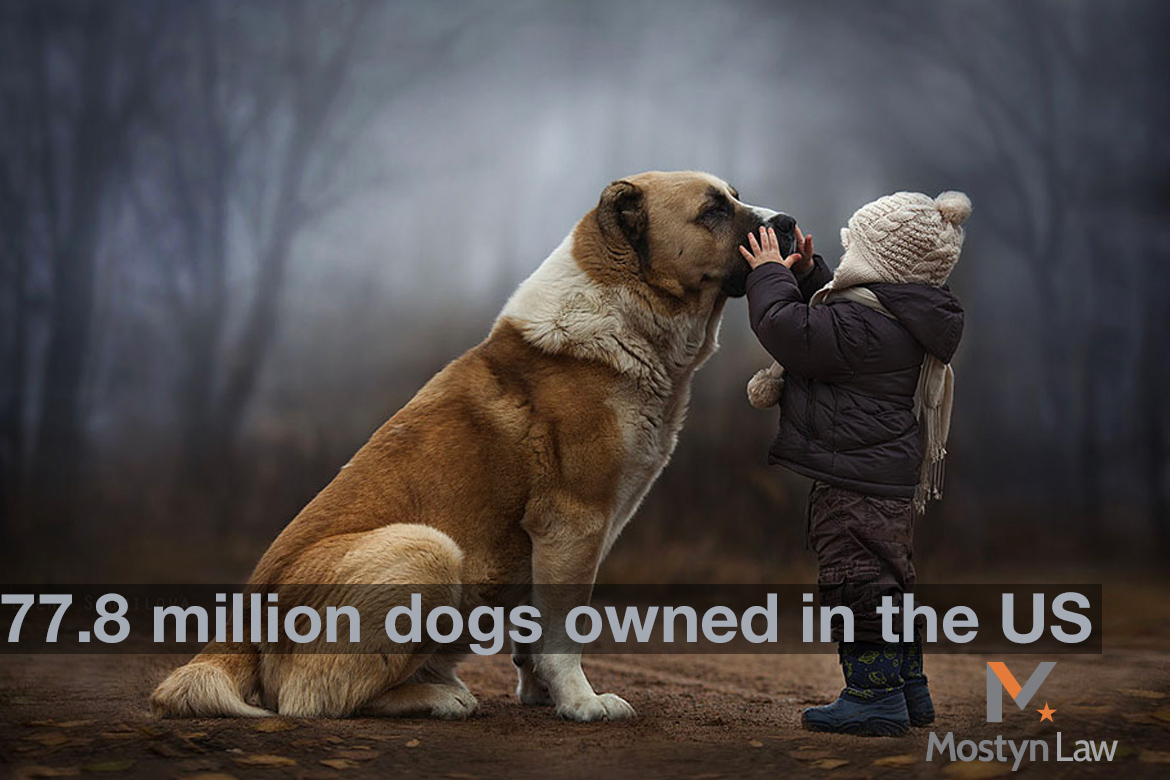According to the Humane Society of the United States, in 2015, 54.4 million households, or roughly 44%, had at least one dog as a family member. The American Pet Products Association put the number of dogs owned in the United States in 2015/2016 at about 77.8 million. Man’s best friend bites and injures nearly 5 million people a year and of this number about 885,000 seek medical attention with one-half of that number children. The CDC figures indicate that one-half of all children by age 12 have been bitten by a dog with five to nine-year-old boys being at the highest risk.
With these statistics, and if you are one of the 54.4 million households that have a dog as a family member, one has to ask—are you covered under your current homeowners’ insurance policy if your dog bites or otherwise injures someone who is not a family member? The good news is that most standard homeowners’ insurance policies contain liability clauses with language like the following:
Losses We Cover Under Coverage Y: Guest Medical Protection:
We will pay the reasonable expenses incurred for necessary medical, surgical, x-ray and dental services; ambulance, hospital, licensed nursing and funeral services; and prosthetic devices, eye glasses, hearing aids, and pharmaceuticals. These expenses must be incurred and the services performed within three years from the date of an occurrence causing bodily injury to which this policy applies, and is covered by this part of the policy.
Each person who sustains a bodily injury is entitled to this protection when that person is:
- On the insured premises with the permission of an insured person; or
- Off the insured premises, if the bodily injury:
- Is caused by an animal owned by or in the care of an insured person;
The bad news is that many insurance companies typically have their own “one-bite rule” meaning that the company will only pay for the first occurrence and then will either “cancel” your policy or add a “canine exclusion”. If this happens, then the next question you will have to ask is: “What’s in my Wallet?”—you will be personally liable for picking up your dog’s second blunder. In 2015, a survey by the Insurance Information Institute showed Texas was number 5 of the top 10 states with the highest estimated number and cost of dog bite claims reporting 688 with an average cost of a claim as $30, 241. Nationwide, dog bites and other dog-related injuries accounted for more than one-third of all homeowners’ insurance liability claim dollars paid out in 2015, costing more than $570 million. Other exclusions that some insurance companies may employ with or without the one-bite rule are “caps” on payment or limits on “who” the attacks cover. For example, some policies exclude mailmen and meter readers as this is seen as just a hazardous part of their job. Other insurance companies have lists of breeds and cross breeds—blacklists—commonly identified as “dangerous breeds” that they will not insure. Some of the breeds this could include are: Pit Bulls, Rottweilers, Chows, Presa Canario Bulldogs, Siberian Huskies, German Shepherds, and Doberman Pinschers.
Finally, general policy language, like that quoted above, would cover your dog’s bite of another pet parent at one of the popular dog parks. Courts have made inconsistent rulings when your dog is in a car and bits someone through the window or from a pick-up. Both homeowner policies and automobile policies often provide coverage for this event. If you have coverage from both policies, let the companies duke it out in court regarding which company will pay.
What’s In Your Policy?
Kay K. Morgan

